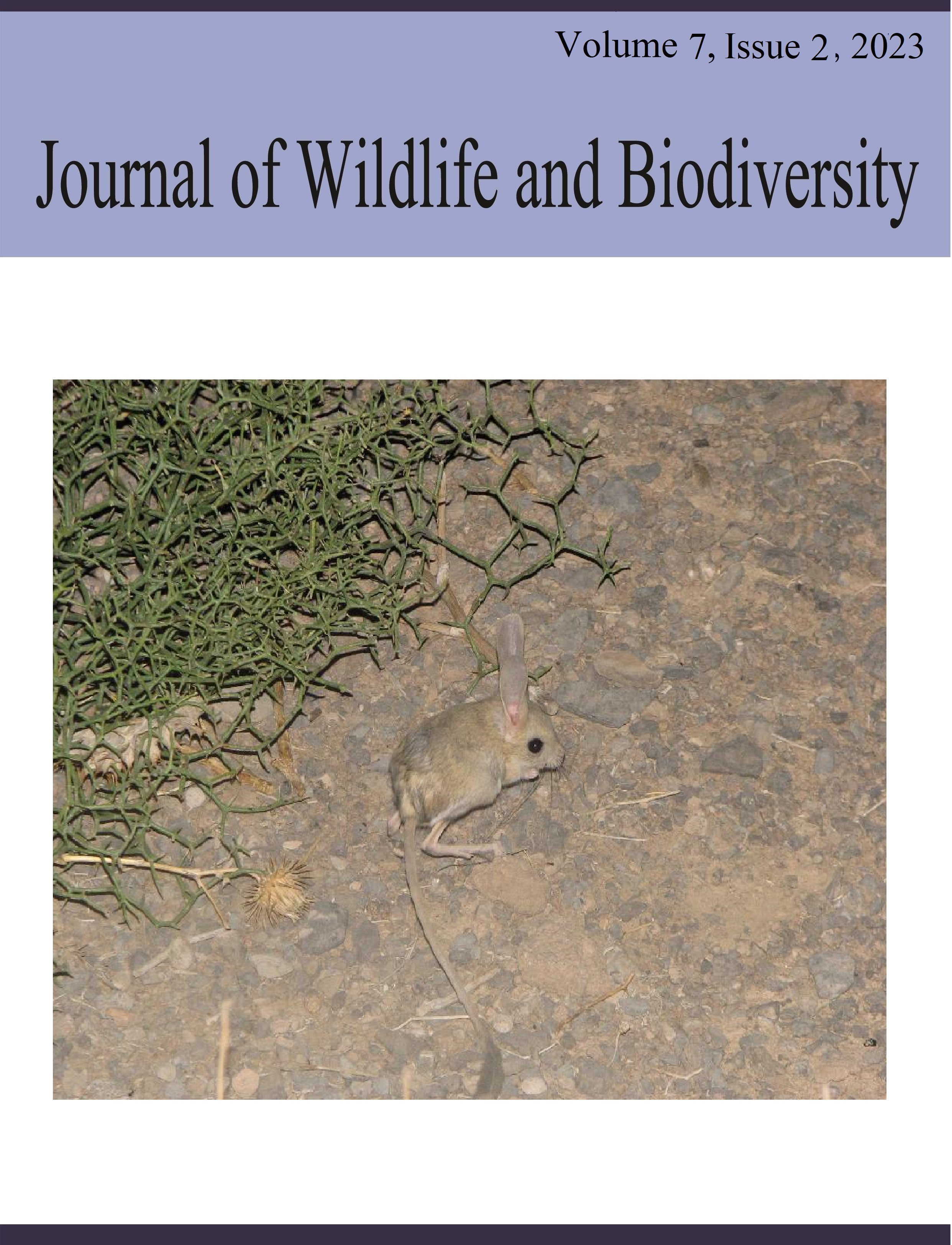Recent evidence for food storing in European ground squirrel (Spermophilus citellus)
DOI:
https://doi.org/10.5281/zenodo.7783319Keywords:
food caching, foraging, Lathyrus tuberosus, SciuridaeAbstract
Whereas European ground squirrels (Spermophilus citellus) do not utilize food caches during hibernation, it has occasionally been reported that they store food during the active season. Recent evidence for S. citellus maintaining food stores in summer arose during the long-term ecological supervision of a construction project in Vienna, Austria. From the onset of the project in 2012, ground squirrels were observed to forage on tubers of the tuberous vetchling (Lathyrus tuberosus). During the preparation of a building plot in July 2016, a cavity containing 380g of tubers of L. tuberosus was excavated by a digger when removing the upper 30 cm soil layer. When the construction area was expanded in July 2017, a ground squirrel repeatedly inspected a burrow on a future building plot, once carrying a tuber to the burrow. To examine if the burrow was vacant, it was stripped by layer, revealing a cache of 290g tubers in a blind-ending tunnel at a depth of about 90 cm. The structure consisted of one chamber without nesting material, and one tunnel containing the cache. We conclude that the burrow may have served as a hideout facilitating food intake while avoiding predation and other adverse external conditions.
References
Breed, M. D. (2002). Hiding Food. In M. D. Breed (Ed.), Animal Behavior An Online Textbook. http://www.animalbehavioronline.com/hidingfood.html
Brinkmann, M. (1951). Über die Zieselkolonien in Oberschlesien. Bonner zoologische Beiträge, 3-4, 191-216.
Calinescu, R. J. (1934). Taxonomische, biologische und biogeographische Forschungen über die Gattung Citellus OKEN in Rumänien. Zeitschrift für Säugetierkunde, 9, 87-141.
Dănilă, I. (1984). La composition de la nourriture de nature végétale chez le Spermophile (Citellus citellus L.) en Roumanie. Travaux du Musèum d’Histoire Naturelle Grigore Antipa, 25, 347-360.
Elliott, C. L., & Flinders, J. T. (1991). Spermophilus columbianus. Mammalian Species, 372, 1-9. http://doi:10.2307/3504178
Floericke, K. (1932). Nagetiere. Bei uns und draußen. Kosmos, Stuttgart, Germany.
Gillis, E. A., Morrison, S. F., Zazula, G. D., & Hik, D.S. (2005). Evidence for Selective Caching by Arctic Ground Squirrels Living in Alpine Meadows in the Yukon. Arctic, 58(4), 354-360.
Grulich, I. (1960). Sysel obecny Citellus citellus L. v CSSR. Práce Brněské Základny Československé Akademie Věd, 32, 473-563.
Hegi, G. (1975). Illustrierte Flora von Mitteleuropa. Band IV Teil 3. Verlag Paul Parey, Berlin, Germany.
Hegyeli, Z. (2020). Spermophilus citellus. The IUCN Red List of Threatened Species 2020, e.T20472A91282380. https://dx.doi.org/10.2305/IUCN.UK.2020-2.RLTS.T20472A91282380.en.
Herzig-Straschil, B. (1976). Nahrung und Nahrungserwerb des Ziesels. Acta Theriologica, 21(7), 131-139.
Hoffmann, I. E., Turrini, T., & Brenner, M. (2008) Do European ground squirrels in Austria adjust their life history to anthropogenic influence? Lynx, 39(2), 241-250.
Kachamakova, M., Antonova, V., & Koshev, Y. (2019). The role of ant nests in European ground squirrel’s (Spermophilus citellus) post-reintroduction adaptation in two Bulgarian mountains. Biodiversity Data Journal, 7, e38292. https://doi.org/10.3897/BDJ.7.e38292.
Lagaria, A., & Youlatos, D. (2006). Anatomical correlates to scratch digging in the forelimb of European ground squirrels. Journal of Mammalogy, 87(3), 563-570.
Lima, M. (2003). Spermophilus beecheyi California ground squirrel. Animal Diversity Web. https://animaldiversity.org/accounts/Spermophilus_beecheyi/.
Millesi, E., Strijkstra, A. M., Hoffmann, I. E., Dittami, J. P., & Daan, S. (1999). Sex and age differences in mass, morphology and annual cycle in European ground squirrels, Spermophilus citellus. Journal of Mammalogy, 80(1), 218-231.
Müller, A., & Müller, K. (1882). Der Ziesel. Spermophilus Citillus. In: Thiere der Heimath. Deutschlands Säugethiere und Vögel 1. Buch. Theodor Fischer, Kassel, Germany, 202-206.
Németh, I. (2010). Factors affecting the hibernation in European ground squirrel Spermophilus citellus. Physiological, behavioral and ecological aspects. Ph.D. Dissertation, Eötvös Loránd University, Institute of Biology, Department of Ethology, Budapest, Hungary.
Niethammer, J. (1978). Citellus suslicus (Güldenstaedt, 1770) - Perlziesel. In J. Niethammer & F. Krapp, F. (Eds.), Handbuch der Säugetiere Europas. Bd. 1, Nagetiere I (Sciuridae, Castoridae, Gliridae, Muridae) (145-151). Akademische Verlagsgesellschaft, Wiesbaden, Germany.
Ramos-Lara, N., Koprowski, J. L., Kryštufek, B., & Hoffmann, I. E. (2014). Spermophilus citellus (Rodentia: Sciuridae). Mammalian Species, 46, 71-87.
Ružić, A. (1978). Citellus citellus (Linnaeus, 1766) - der oder das Europäische Ziesel. In J. Niethammer & F. Krapp, F. (Eds.), Handbuch der Säugetiere Europas. Bd. 1, Nagetiere I (Sciuridae, Castoridae, Gliridae, Muridae) (123-144), Akademische Verlagsgesellschaft, Wiesbaden, Germany.
Zherebtsova, O. V. (2005). Cheek pouch retractor of Spermophilus citellus L. and peculiarities of their morphogenesis in Sciuridae. Proceedings of the Zoological Institute, St. Petersburg, 306, 72-81.



